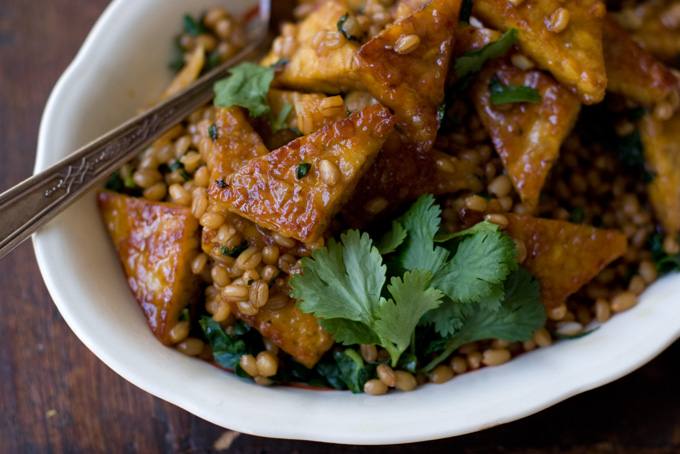Although I understand this method of making vegan cream has been used for eons, it has to be my latest yummy discovery!
The science behind this whipped cream is incredibly simple. In every can of coconut milk, you have coconut water and coconut fat. If you shake and open the can, the two will be mixed together into a creamy liquid, but if you let the can sit overnight in the refrigerator, the fat rises to the top and solidifies while the water sinks to the bottom. Try a few different brands as some are definitely better than others, although I recently used a Store Brand, the cheapest, and it worked equally well!
To make the whipped cream, you want to chill a sealed can in the refrigerator overnight. After at least 8 hours, carefully remove the lid and you should have a solid white block of coconut fat along the top of the can. Scrape this into a cold bowl, taking care to leave the runnier parts behind. Most of the solids can be easily removed and you will see the clear water remaining at the bottom. I suggest you save the clear water for smoothies, etc..

Next, with a small whisk or hand mixer (recommended), beat the coconut fat into a firm whipped cream. It will start out fairly runny and become thicker over 3-5 minutes. When the consistency is right, add in a little sweetener. Stevia works well or 2-3 teaspoons of a liquid sweetener like maple syrup, but this can make your final product a little more runny. If this happens it will thicken once it is placed back in the refrigerator. Once the sweetener is combined, then add in one of the following flavorings.
To make a Vanilla whipped Cream, simply add 1/2 teaspoon vanilla and beat until combined.
Chocolate whipped Cream is my favorite. To make this variety, take about 2 tablespoons of cacoa or vegan chocolate and melt in a bowl over hot water. Then, slowly drizzle it into the whipped cream while mixing. The heat from the chocolate might make the whipped cream become more runny, but it should firm up again when chilled.
Strawberry Cream, mash 2-3 medium strawberries until they become very soft. Break them up into small chunks and add to the whipped cream. Beat thoroughly until the strawberries are completely incorporated. The whipped cream will become a gorgeous pink color, but it will turn grey after several hours so this one is best to make right before using.
No matter which variety you choose, the whipped cream can be used immediately or kept in the refrigerator for 3-4 days.
The first time I made this I could not get over how amaaaaazing it tastes. It doesn't taste like coconut
which was very surprising so it is worth always keeping a tin or two in the refrigerator for use at a moments notice.
You can use this whipped cream just like regular dairy whipped cream. I like to use it in desserts,cakes & frostings, and then store my creation in the refrigerator until ready to serve; it’s also amazing over a simple bowl of fruit or pancakes. The options are really endless!
Have fun making different kinds of flavours and fooling your friends and family, as most will think it is a dairy cream!
I am wondering if Sour Cream can also be made this way, using lemon juice and fiddling a bit with the recipe! At the moment I use a cashew sour cream but it might be a change not to always use nuts.I would love to hear from some of you who might have some ideas as my husband loves to dob sour cream on his potatoes and top his avocado salsa with sour cream before eating his tacos!




